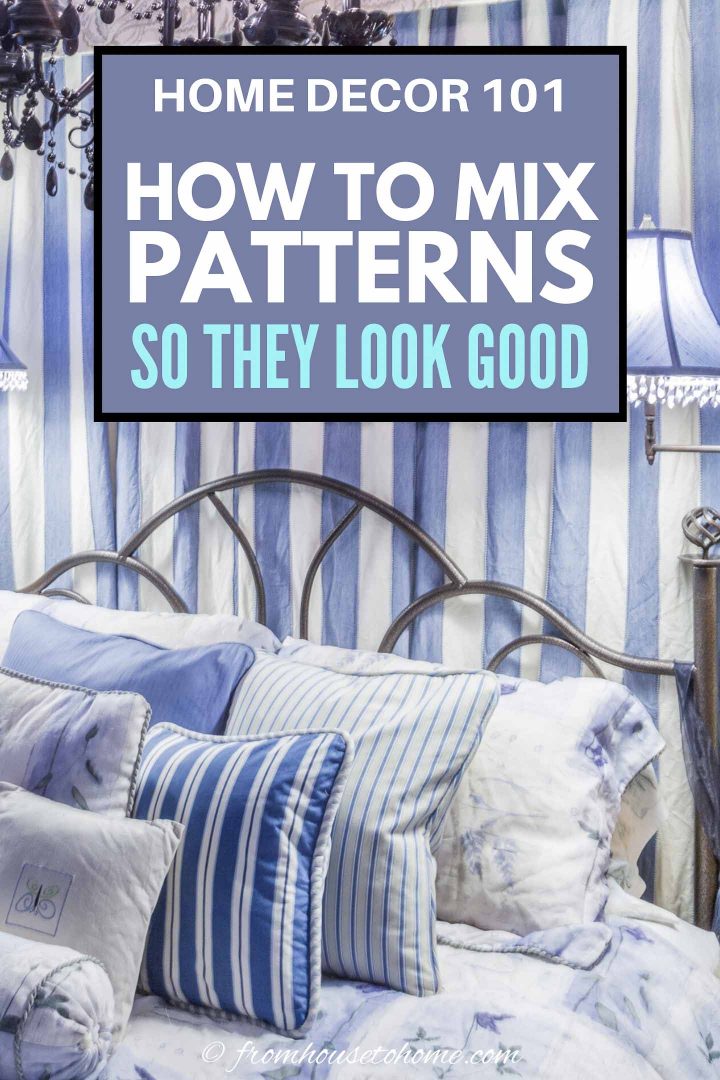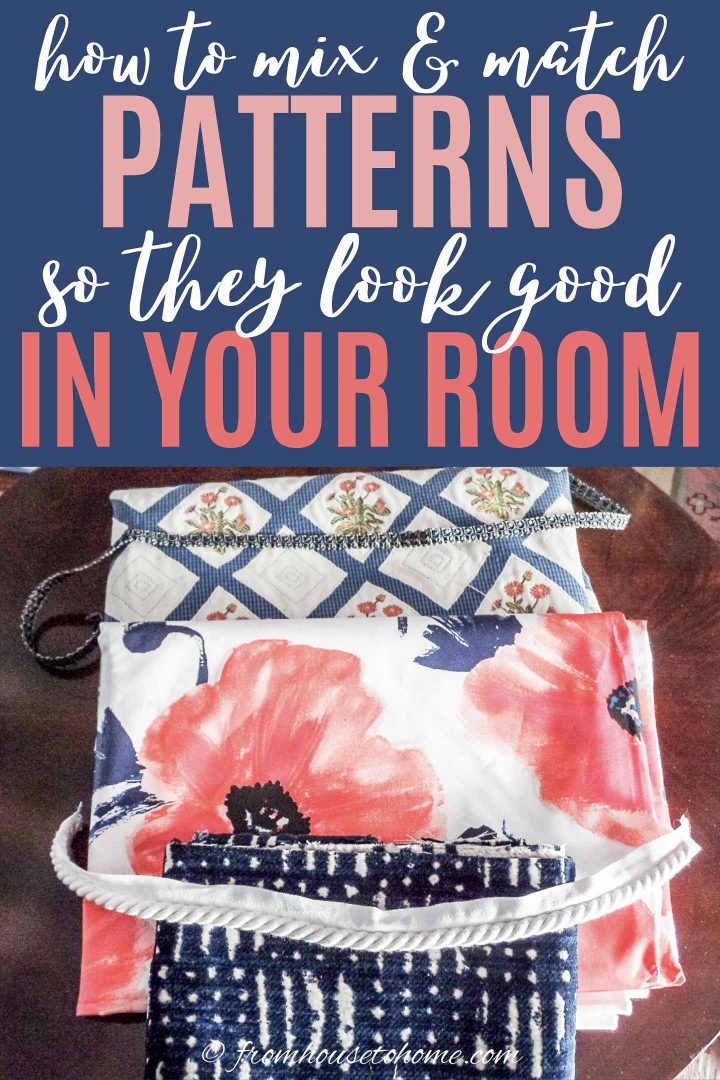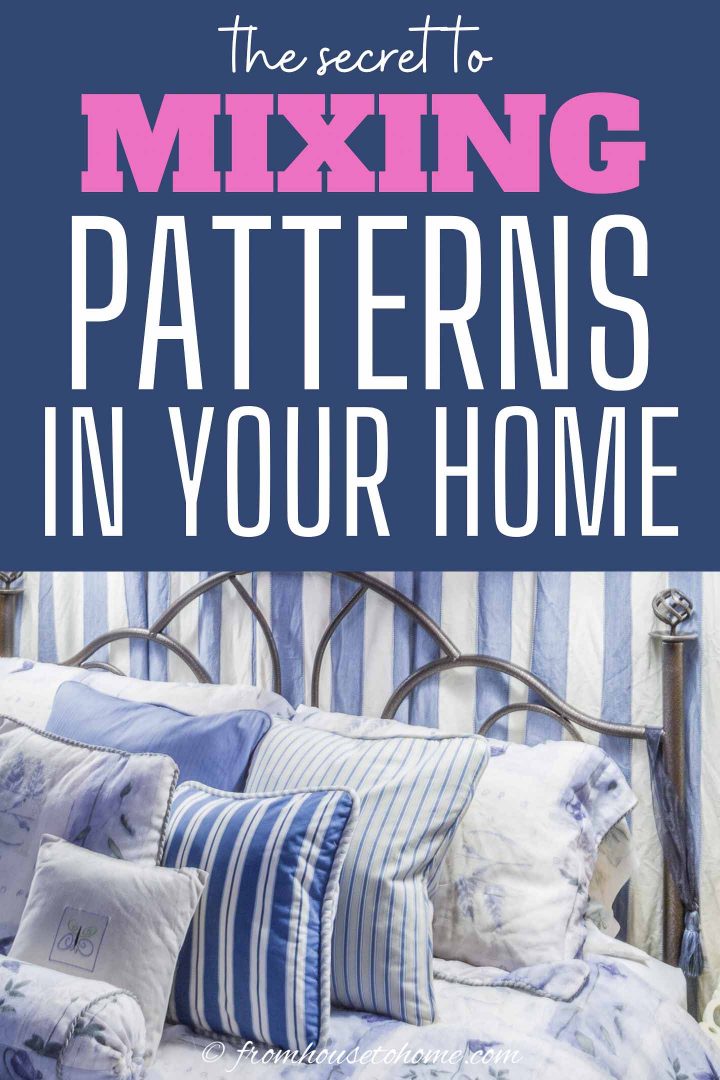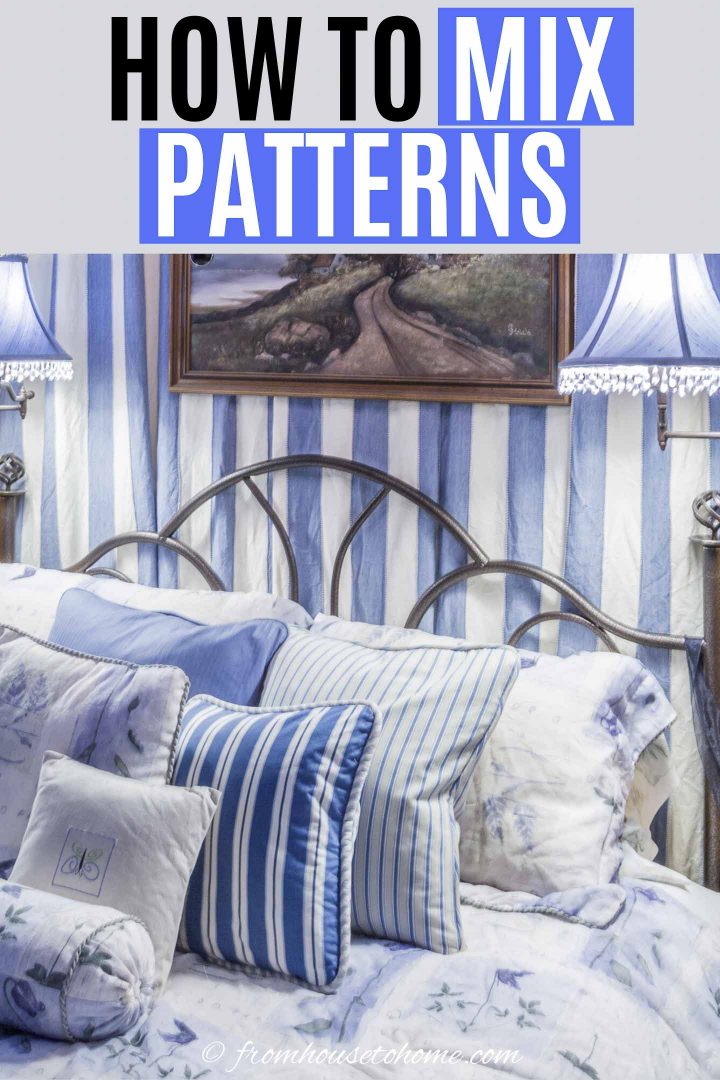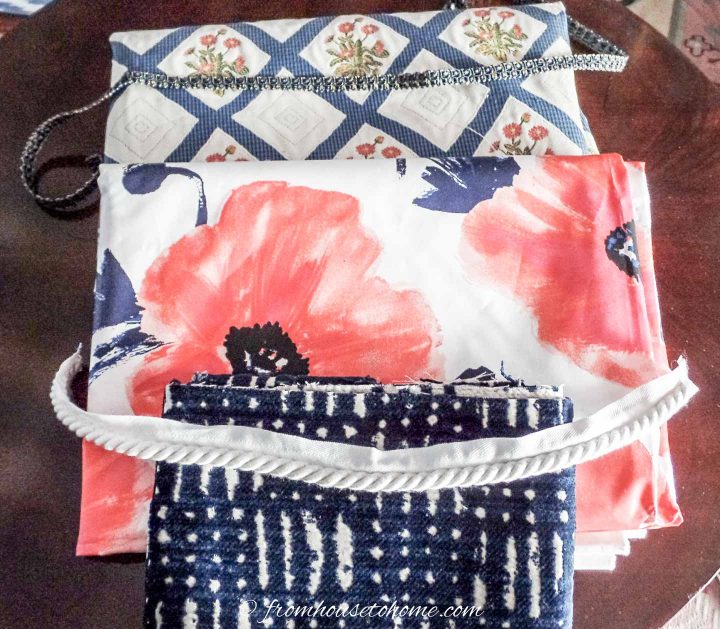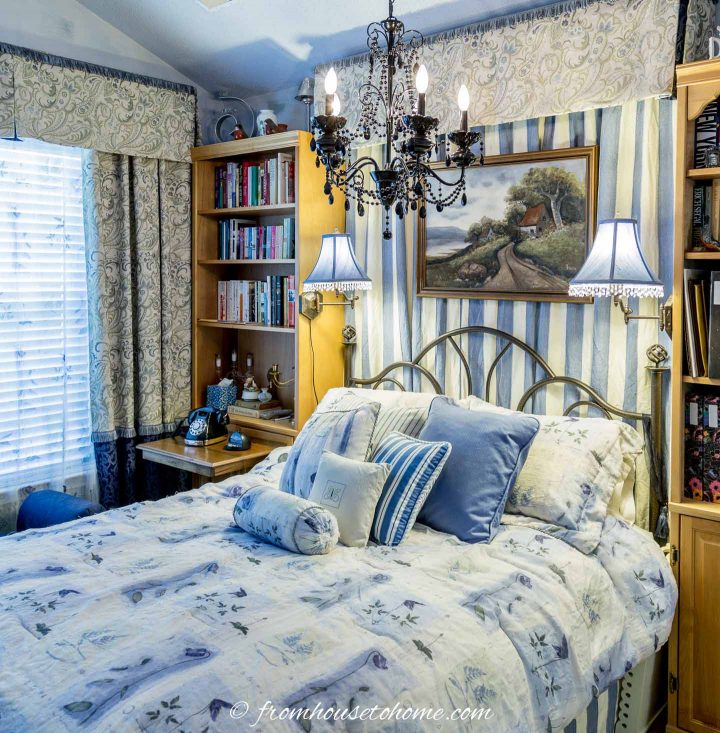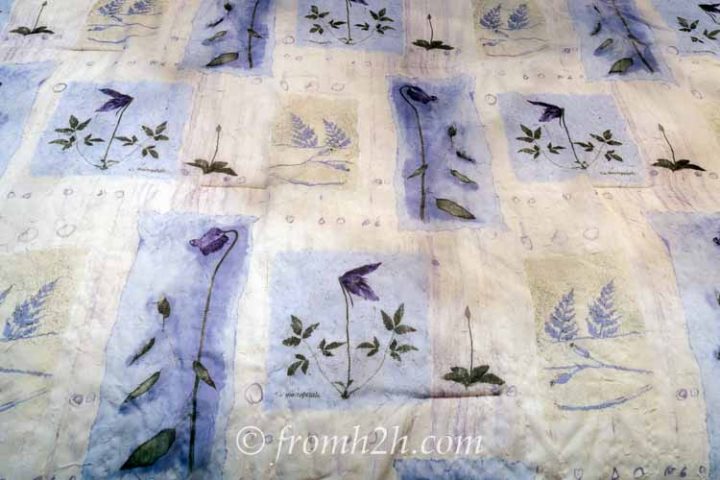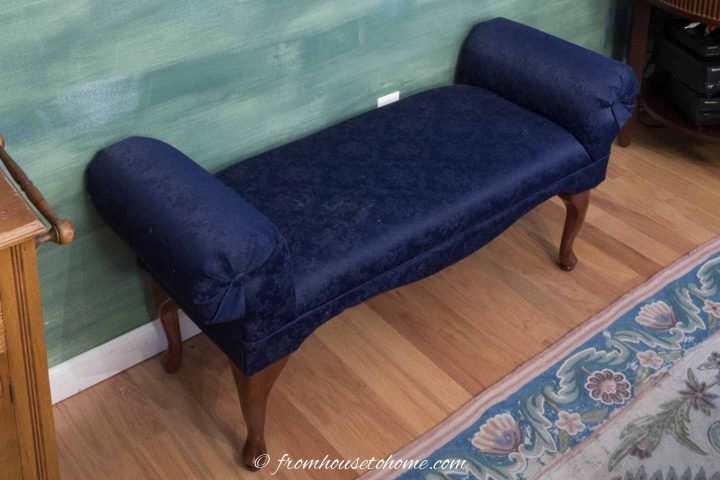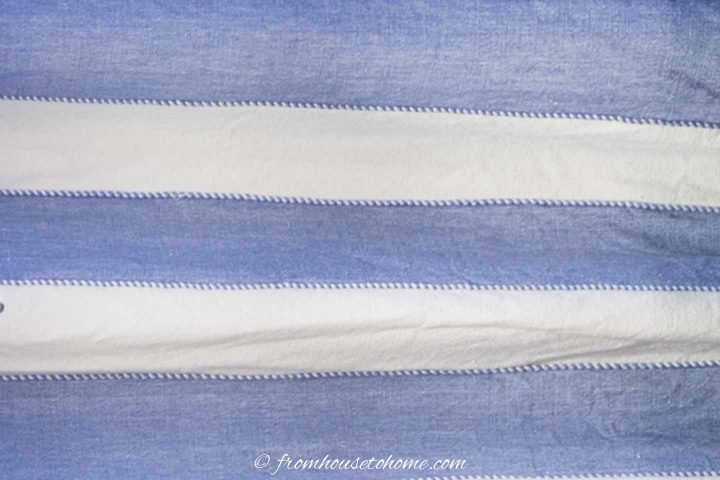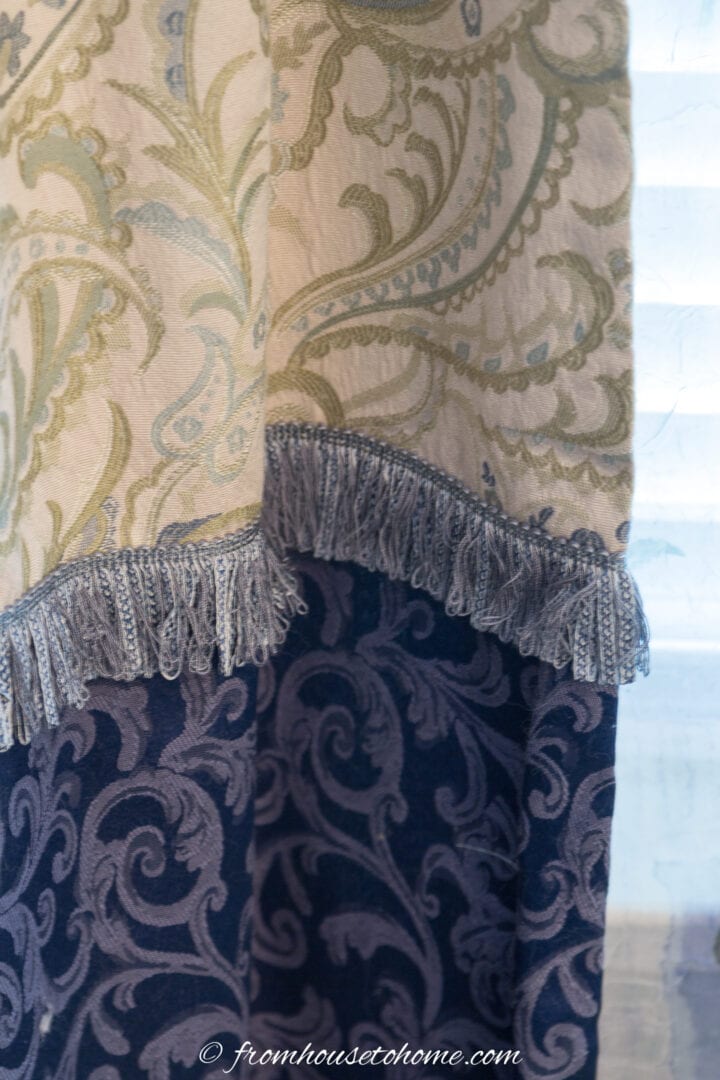Combining Patterns: How To Mix And Match Patterns So They Look Good In Your Room Decor
For many people, picking patterns for a room makeover is scary. Trying to figure out which ones go together and what will look too busy is tricky…unless you know our simple process that teaches you how to mix and match patterns so they look good.
Trying to decide what patterns to include in a room you are decorating can be a daunting task.
There are so many options…how do you decide which ones will look good together?
It’s actually not as hard as it seems.
We have an easy 5-step process that will help you figure out exactly how to mix and match patterns to go with your room decor.
Before You Start
This post may contain affiliate links. We make a small commission if you buy the products from these links (at no extra cost to you). As an Amazon Associate, I earn from qualifying purchases. But we only recommend products we would use ourselves. For more information, click here to see our disclosures.
There are a couple of things you’ll want to do before you start choosing patterns for your room.
Create a Mood Board
Before we dive into the mix and match fabric formula, I always start a mood board for every room I am decorating.
A mood board is just a fancy way of saying “a place where you can see all of your decorating choices in one place”. (If you like the fabric combination above, take a look at my mother’s living room makeover to see the finished room).
It allows you to compare the color and patterns of everything you have picked so far to make sure everything looks good together…sometimes that fabric swatch you thought was fantastic in the store doesn’t look so great when you get home and see it next to the color of your floor.
Traditionally, mood boards were physical boards (foam board actually) that had all of the paint chips, fabric samples, area rug pictures, furniture pictures, etc. pinned to them.
They are great if you want to carry the board into the room being decorated and see how everything looks in that space…not so great for carrying around to the store when you are picking out the fabric for your curtains.
These days, Pinterest is a great way to create a mood board. When I’m re-doing a room, I create a separate Pinterest board just for that room.
Then I can upload my own pictures, pin pictures from websites, or re-pin other pins that show things I may want to use in my room.
If I pin something and it doesn’t look good with what I have already selected, I just delete the pin.
If you are pinning the picture from an online store, Pinterest will also maintain the link back to that store (no more forgetting where you saw that sofa you loved!)
And you can do all of this from your phone…very portable!
Pick Your Colors
Before you start picking patterns, you should have a general idea of what colors you want to include.
That will help narrow down the choices since you can eliminate all of the ones that don’t go with your color scheme.
If you need help choosing your colors, check out our whole house color scheme tutorial.
My Mix and Match Patterns Example Room
I will be using my guest bedroom makeover as a step-by-step example of the pattern-choosing process.
Now let’s get on with picking your patterns!
Step 1: Choose a Big Pattern
The first step to mixing and matching patterns successfully is to choose a big pattern that includes most (if not all) of the colors you want to use in the room.
This will be a jumping off point to find the rest of the patterns for your room.
It can be some fabric you want to use for curtains, a gorgeous area rug, or a beautiful duvet that you found.
In my guest bedroom, my colors were blue, green and cream, so this large-patterned duvet was a perfect starting point for my room.
Whatever it is, this pattern is the basis for everything else in your room, so make sure you love it!
Try to use this big pattern in a fairly large area, such as the curtains or a duvet. It will get lost on a small pillow.
However, I usually don’t use this pattern for large, expensive pieces of furniture that you will own for a long time (like a sofa) because it can limit your options for the future.
Step 2: Select a Solid (Or Two)
The second step to pick the right fabrics is to select a solid color that matches one of the colors from your big pattern fabric.
Most people don’t have any problems with this step of the process…this is the safe and easy choice!
There aren’t any limitations on where to use solid fabrics and you can have more than one solid color fabric in a room.
I like to use them for big pieces of furniture that are difficult to change such as sofas or love seats.
That leaves the most flexibility for re-arranging in the future.
In my guest bedroom makeover, I chose 2 solid fabrics – a navy blue for the upholstered bench opposite the bed, and a light blue for the lamp shades beside the bed.
Step 3: Find a Stripe
The third step is to a find a striped or plaid fabric that uses colors from your big pattern.
Stripes are very versatile and can be used for pretty much anything in your room.
Which means you can use more than one of them if you want to.
The size of the stripe is often determined by where you are putting it.
Thin stripes usually work well in smaller areas like cushions. They can be hard to look at on a larger surface.
Thicker stripes work well in bigger areas like curtains. Although they can be used for smaller items like pillows as well.
Step 4: Choose a Small Pattern
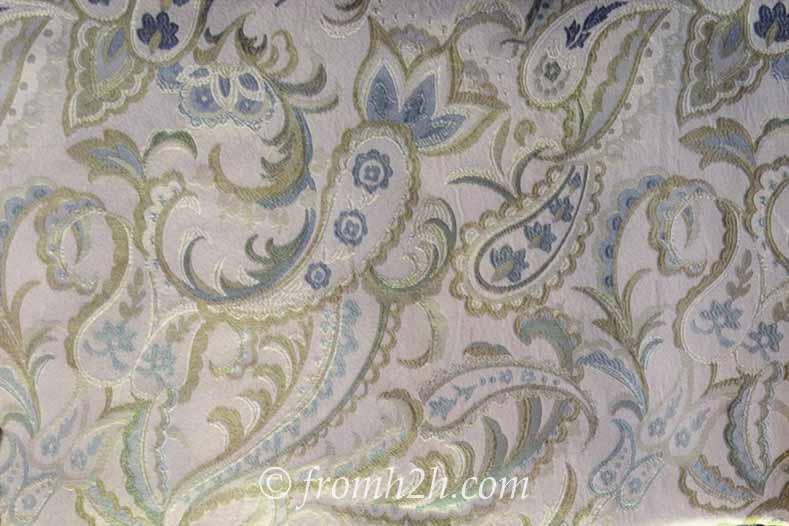
The next step is to choose a small pattern fabric.
This is usually a repetitious pattern that adds interest and color to the room, but doesn’t make a bold statement like the big pattern does.
It lets you reinforce the color scheme without making the room too busy.
Patterns such as paisley and damask are often good candidates this.
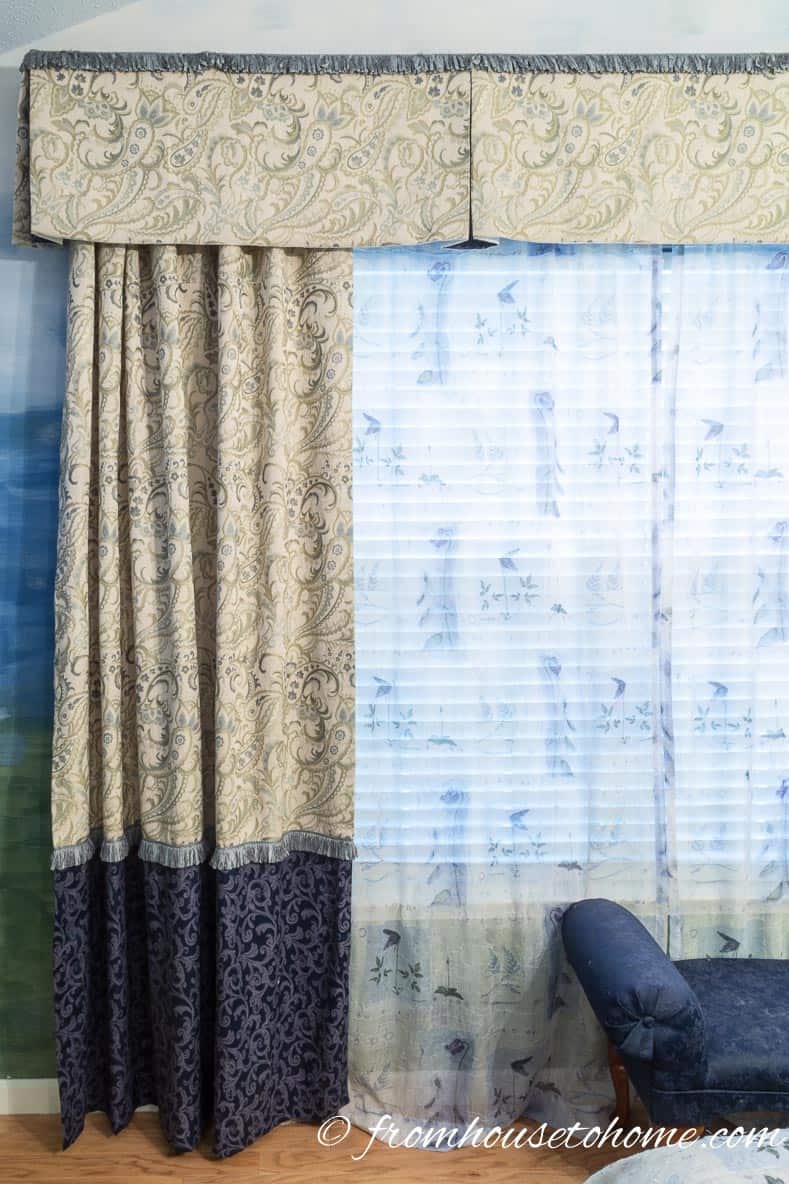
In my guest bedroom, the paisley pattern in the curtains picks up the cream, green and blue colors from the duvet, but isn’t as defined as the duvet’s big floral pattern.
The blue strip on the bottom of the curtains also contains a paisley pattern in two shades of navy…the paisley pattern ties it into the rest of the curtain, while the navy blue color matches the flowers in the duvet and the solid-colored bench.
Step 5: Add a Texture
The last step of our mix and match pattern formula is to choose something with texture.
The main purpose of this pattern is to add a more three-dimensional interest to the room.
Trims, such as the fringe used on the curtains above, also “count” as texture.
A fabric is adding texture if you can tell from a distance that it isn’t “flat”.
Chenille, velvet, mohair and faux fur are all examples of fabrics that add texture.
More Examples
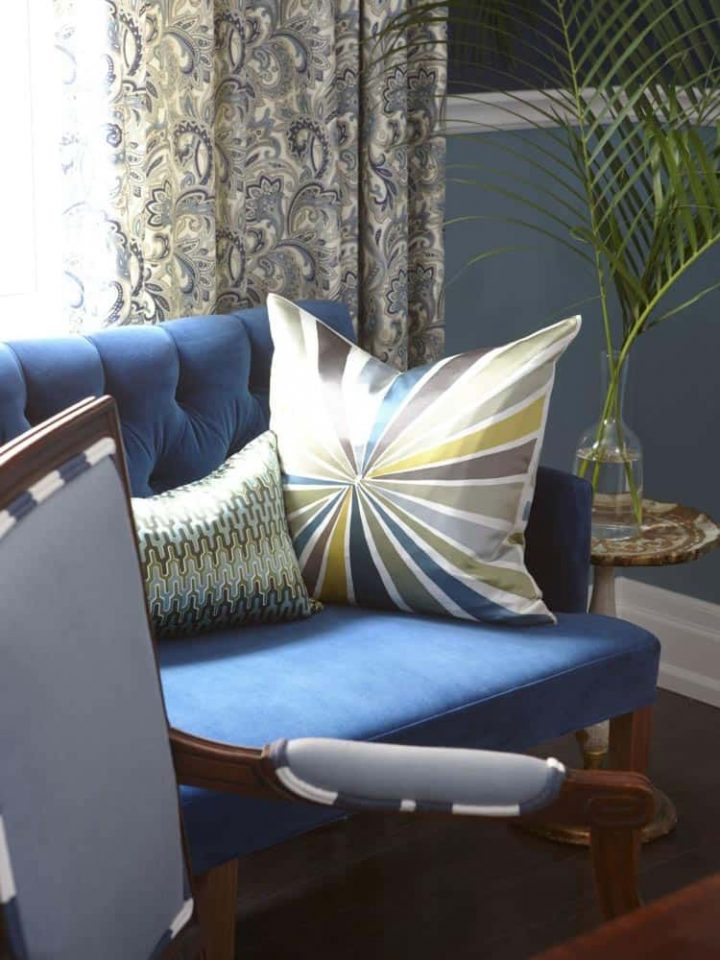
Sarah Richardson of HGTV fame is a master of using different fabric combinations which always look good together.
So here are a couple of examples she did for her TV show “Sarah’s House”.
In the picture above, she has successfully combined 6 different patterns in a very small space! In this case:
- The curtains are the large scale print.
- The light blue chair in the foreground with the white and blue striped piping adds the solid color fabric.
- The large square cushion is the stripe.
- The smaller cushion with the geometric print is the small pattern.
- The blue velvet sofa is the texture.
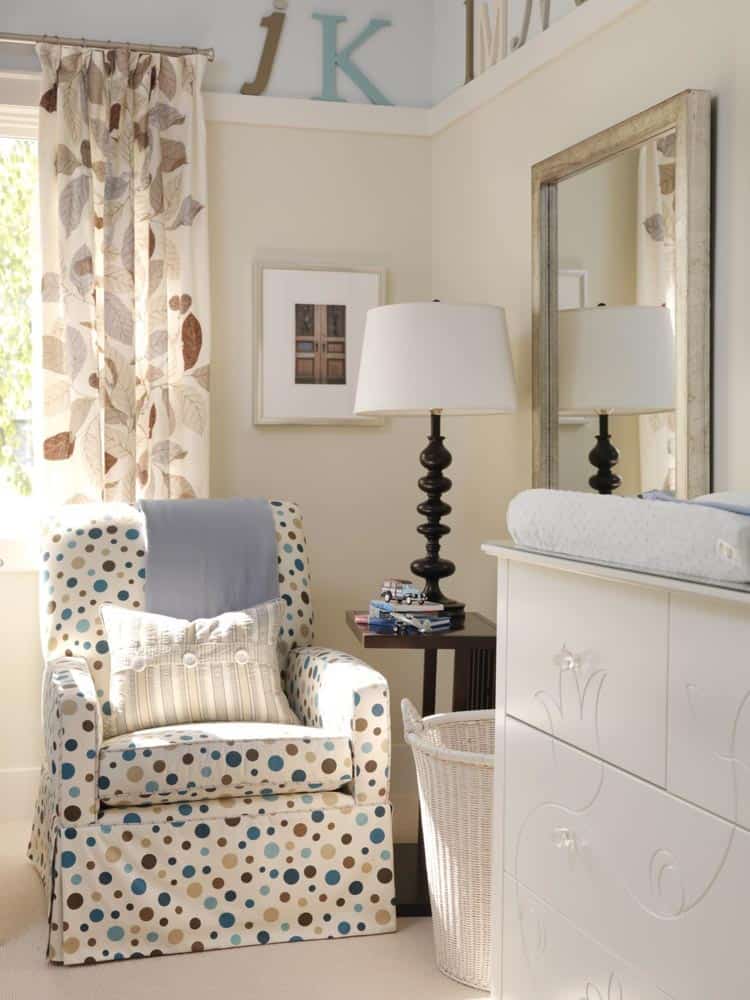
Similarly, this room mixes some patterns that a lot of people would be afraid to try together, but she manages to make it work.
- The large scale pattern is used for the curtains
- The solid is the blanket she laid over the back of the chair.
- The stripe is the throw cushion on the chair.
- The chair is the small scale pattern.
- In this picture, the throw cushion on the chair also adds the texture.
Hopefully, you have a better idea of how to mix and match patterns for your room. Now it’s time to get out there and put the process to work!
Do you have comments or questions on how to mix and match patterns for your room? Tell us in the section below.
Pin It So You Don't Forget It!
This post was originally published on November 10, 2015 but was updated with new content on August 15, 2020.

